|
|
|
MYTH: Tacky rubbers produce more spin |
Post Reply 
|
Page 12> |
| Author | ||
sidofmillenium 
Gold Member 

Joined: 12/22/2003 Location: United States Status: Offline Points: 1504 |
 Post Options Post Options
 Thanks(0) Thanks(0)
 Quote Quote  Reply Reply
 Topic: MYTH: Tacky rubbers produce more spin Topic: MYTH: Tacky rubbers produce more spinPosted: 08/28/2009 at 7:53pm |
|
|
Stickiness adds control...it is able to be unaffected by opponent's spin...b/c it kills it. Harder sponge is usually less elastic...therefore..those usual chinese rubbers aren't able to produce as much spin as the grippy europeans.
|
||
 |
||
| Sponsored Links | ||
 |
||
ffx-me 
Gold Member 
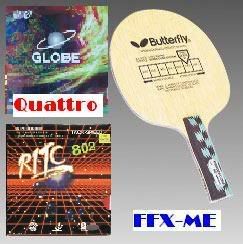
Joined: 01/06/2008 Location: Canada Status: Offline Points: 1459 |
 Post Options Post Options
 Thanks(0) Thanks(0)
 Quote Quote  Reply Reply
 Posted: 08/28/2009 at 7:55pm Posted: 08/28/2009 at 7:55pm |
|
|
For loops they give as much spin as grippy rubbers but you need a different motion, but they definitely give more spin of serves.
|
||
|
-Primorac 2000, 802 + globe 999 quattro
-Korbel, Cream MRS + 802-40 |
||
 |
||
sidofmillenium 
Gold Member 

Joined: 12/22/2003 Location: United States Status: Offline Points: 1504 |
 Post Options Post Options
 Thanks(0) Thanks(0)
 Quote Quote  Reply Reply
 Posted: 08/28/2009 at 8:07pm Posted: 08/28/2009 at 8:07pm |
|
|
yeah, I have noticed that they give more spin in pushes as well...but the thing is, we never hit as hard w/ euro rubbers b/c we'll miss....so they r never same stroke...therefore, comparison through experience is not possible....we'll have to take scientific approach...which is what i mentioned in my first post. Since the stroke for grippy rubber is more energy effecient as well...I feel free to call them "superior". Even though some think tacky is the foundation for short game...w/ less touch like Michael Maze...and flips like Schlager....COME ON!!!! |
||
 |
||
ffx-me 
Gold Member 

Joined: 01/06/2008 Location: Canada Status: Offline Points: 1459 |
 Post Options Post Options
 Thanks(0) Thanks(0)
 Quote Quote  Reply Reply
 Posted: 08/28/2009 at 8:11pm Posted: 08/28/2009 at 8:11pm |
|
|
I would say that tacky are superior since you can have spinny brush loops as spinny as the grippy mechancal loops, but you can as well do much spinnier serves and pushes. Yes Schlager has awesome serves with Bryce but he's a pro, compare him to Ma Lin... Nuff said.
|
||
|
-Primorac 2000, 802 + globe 999 quattro
-Korbel, Cream MRS + 802-40 |
||
 |
||
sidofmillenium 
Gold Member 

Joined: 12/22/2003 Location: United States Status: Offline Points: 1504 |
 Post Options Post Options
 Thanks(0) Thanks(0)
 Quote Quote  Reply Reply
 Posted: 08/28/2009 at 8:40pm Posted: 08/28/2009 at 8:40pm |
|
|
Tacky does have more control...including the techniques....so maybe I can't claim grippy are superior....but...scientifically speaking...how is it possible for tacky to create more spin?(or even equal in topspin rallies, since tacky slows down opponent's spin)
|
||
 |
||
debraj 
Premier Member 
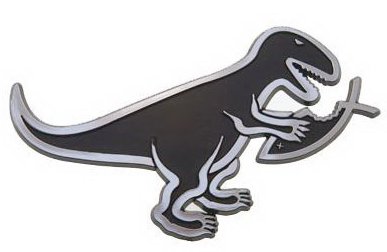
Joined: 06/04/2007 Location: United States Status: Offline Points: 3369 |
 Post Options Post Options
 Thanks(0) Thanks(0)
 Quote Quote  Reply Reply
 Posted: 08/28/2009 at 8:40pm Posted: 08/28/2009 at 8:40pm |
|
|
hang-on guys not so 'black' or 'white'
non-tacky tenergy definitely generates more spin than tacky 729 rubber on loops tacky h3 definitely generates more spin than non-tacky and soft andro impulse speed rubbers on loops it is a myth that higher the tackiness higher will be the spin. but the reverse is not true either. it will be a parabolic equation if you take a given tackiness and a given power of stroke; and keep varying the sponge hardness ....yielding a highest spin point and then coming down. similarly it will be a parabolic equation if you vary the tackiness with a constant sponge hardness and constant power of the stroke .... yielding a max and then coming down. in short spin = f{surface friction, sponge hardness, stroke velocity} ...while rubber thickness, blade and other factors are constant. we are dealing with 3d equations and they are definitely non-linear and non-planer. |
||
 |
||
Rich215 
Premier Member 
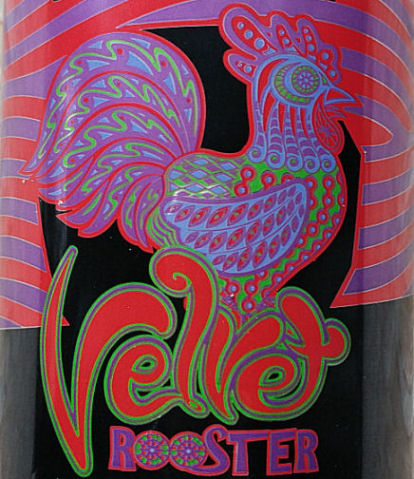
Joined: 02/28/2008 Location: United States Status: Offline Points: 3488 |
 Post Options Post Options
 Thanks(0) Thanks(0)
 Quote Quote  Reply Reply
 Posted: 08/28/2009 at 8:53pm Posted: 08/28/2009 at 8:53pm |
|
|
Myth: Myths are Mythical!
|
||
|
|
||
 |
||
Beer Belly 
Super Member 

Joined: 08/18/2008 Location: Australia Status: Offline Points: 312 |
 Post Options Post Options
 Thanks(0) Thanks(0)
 Quote Quote  Reply Reply
 Posted: 08/28/2009 at 9:07pm Posted: 08/28/2009 at 9:07pm |
|
|
I agree that tacky rubbers = more spin on serves. Other than that, H3 is the bomb!
|
||
 |
||
sidofmillenium 
Gold Member 

Joined: 12/22/2003 Location: United States Status: Offline Points: 1504 |
 Post Options Post Options
 Thanks(0) Thanks(0)
 Quote Quote  Reply Reply
 Posted: 08/28/2009 at 11:57pm Posted: 08/28/2009 at 11:57pm |
|
|
Imagine a rubber with no friction, but pure stickiness. So the only way to create spin is to graze through it.
Now, imagine a rubber with only friction, but instead of grazing, u angularly kill the ball. Now, which one should spin more?(same?) |
||
 |
||
benfb 
Platinum Member 
Joined: 10/10/2008 Location: United States Status: Offline Points: 2709 |
 Post Options Post Options
 Thanks(0) Thanks(0)
 Quote Quote  Reply Reply
 Posted: 08/29/2009 at 12:16am Posted: 08/29/2009 at 12:16am |
|
|
For looping, the sponge is as important the tackiness (or lack thereof). If you have too little grip on the ball (think of anti), then the loop isn't going to happen because the ball will slide off. If you have too much stickiness (as with some super-tacky Chinese rubbers), the rubber grabs the ball, which prevents you from adding to the pre-existing rotational speed of the ball. But for everything in the middle, the sponge is going to be the critical fact.
As for serves or pushes, I think that depends on your technique. You can generate comparable spin either way, but you need the proper (and different) technique, depending on your rubber. Those who say that one type of rubber is better simply don't have the right kind of technique for the other kind of rubber.
|
||
 |
||
MindTrip 
Super Member 
Joined: 02/03/2007 Location: United States Status: Offline Points: 412 |
 Post Options Post Options
 Thanks(0) Thanks(0)
 Quote Quote  Reply Reply
 Posted: 08/29/2009 at 1:00am Posted: 08/29/2009 at 1:00am |
|
Someone has obviously never played with sticky rubbers. Do you really think that stickiness adds control and kills incoming spin? Seriously? If anything, it is more sensitive to incoming spin than non tacky rubber. You MUST be getting anti-spin rubber and sticky rubber confused. Sticky rubber requires a more closed angle when blocking, because it is more sensitive to an opponent's spin. As far as which has more spin; I have played with both sticky and grippy. I played with every Chinese rubber from Globe to DHS to 729SP, with SP being the stickiest. I agree with everyone. Chinese rubber can create more spin on opening loops and serves. Grippy rubber can create almost as much spin on serves just by tossing the ball higher. And in loops they are near the same, with a slight edge going to grippy. So, Serves- Sticky Opening Loops/Flips- Sticky Loop Rally- Grippy |
||
|
Apolonia ZLC
Donic Z3 Andro R42 |
||
 |
||
ffx-me 
Gold Member 

Joined: 01/06/2008 Location: Canada Status: Offline Points: 1459 |
 Post Options Post Options
 Thanks(0) Thanks(0)
 Quote Quote  Reply Reply
 Posted: 08/29/2009 at 9:33am Posted: 08/29/2009 at 9:33am |
|
|
well said mindtrip, my thoughts exactly, and sticky rubbers are also much better for looping backspin.
|
||
|
-Primorac 2000, 802 + globe 999 quattro
-Korbel, Cream MRS + 802-40 |
||
 |
||
sidofmillenium 
Gold Member 

Joined: 12/22/2003 Location: United States Status: Offline Points: 1504 |
 Post Options Post Options
 Thanks(0) Thanks(0)
 Quote Quote  Reply Reply
 Posted: 08/29/2009 at 10:12am Posted: 08/29/2009 at 10:12am |
|
|
I played it sticky rubbers for 3 years of my life. Y is it so much easier to chop with tacky than grippy? B/c it stops the speed and spin of the ball. Tell me how exactly does stickiness impart spin on the ball? Grip is like angular speed...but with stickiness a ball is lifted up like with a glue...not being rolled around...so it creates only a little spin due to the grazing effect.
|
||
 |
||
ffx-me 
Gold Member 

Joined: 01/06/2008 Location: Canada Status: Offline Points: 1459 |
 Post Options Post Options
 Thanks(0) Thanks(0)
 Quote Quote  Reply Reply
 Posted: 08/29/2009 at 10:17am Posted: 08/29/2009 at 10:17am |
|
|
ok, first of all all rubers stop the spin, especially when you push since you need to reverse the spin, people often say that reversing the spin is like top vs underspin but that is false, that is adding to the spin, when you go top vs top or back vs back then you have to reverse the spin. They are better to push since the spin comes from the topsheet and therefore do not require the ball to sink in the sponge. You can then create spinny balls without force unlike with grippy rubbers which use mechanical spin and require the ball to have momentum to sink into the sponge and are therefore worse for the short game, service or looping chops since on slow balls the ball cannot sink as much into the sponge and it simply slides off.
|
||
|
-Primorac 2000, 802 + globe 999 quattro
-Korbel, Cream MRS + 802-40 |
||
 |
||
sidofmillenium 
Gold Member 

Joined: 12/22/2003 Location: United States Status: Offline Points: 1504 |
 Post Options Post Options
 Thanks(0) Thanks(0)
 Quote Quote  Reply Reply
 Posted: 08/29/2009 at 11:01am Posted: 08/29/2009 at 11:01am |
|
|
The reason tacky spins more b/c of its hard sponge. Usually when ppl loop...their grip is loose...but if u have your grip tightened...then the spring effect truly takes place. I mean u r proving my point....in serves and opening loops...tacky produces more spin...but in loop rallies...grippy produces more b/c it doesn't cancel the opponent's spin. Even if a rubber is very mildly tacky...it will very mildly cancel spin...when tackiness gets too much...it doesn't magically just holds the ball cancelling all spin and speed....it has always been doing that.
|
||
 |
||
ffx-me 
Gold Member 

Joined: 01/06/2008 Location: Canada Status: Offline Points: 1459 |
 Post Options Post Options
 Thanks(0) Thanks(0)
 Quote Quote  Reply Reply
 Posted: 08/29/2009 at 11:22am Posted: 08/29/2009 at 11:22am |
|
|
ARGH! it doesnt cancel spin!!! it does the same thing as a grippy rubber, it reverses the topspin into topspin, read my last post carefully. Tacky rubbers dont play like short pips, the NEVER cancel spin.
|
||
|
-Primorac 2000, 802 + globe 999 quattro
-Korbel, Cream MRS + 802-40 |
||
 |
||
benfb 
Platinum Member 
Joined: 10/10/2008 Location: United States Status: Offline Points: 2709 |
 Post Options Post Options
 Thanks(0) Thanks(0)
 Quote Quote  Reply Reply
 Posted: 08/29/2009 at 12:56pm Posted: 08/29/2009 at 12:56pm |
|
|
ffx, I disagree, at least as far as counter-looping goes. You are correct that when reversing the spin, you need to stop the old spin and then send the ball out with reversed spin. However, a tacky rubber has trouble "letting go" of the ball. It's like a baseball pitcher whose fingers hold on to the ball at the end of the pitch. Because the sponge is the most important part for counter-looping, the grippy topsheet works better without "holding on" to the ball. For looping chop balls, there is no doubt that the grippy top sheet is better. You're no longer trying to reverse the spin and getting extra "grab" on the ball is only going to make it more difficult.
In the case of pushes, I think you are right. You can use the top sheet without digging into the sponge, thus letting you get spin on a short ball. That's for short pushes. For long pushes, I suspect there isn't much difference between the rubbers.
By the same token, I still claim there is no significant advantage to either top sheet for serves. For serves, it is a matter of adjusting your technique. This is why, if you made a list of the greatest servers of all time, there would be both Europeans and Chinese on the list.
|
||
 |
||
jkillashark 
Silver Member 
Joined: 03/14/2007 Location: Bay Area Status: Offline Points: 561 |
 Post Options Post Options
 Thanks(0) Thanks(0)
 Quote Quote  Reply Reply
 Posted: 08/29/2009 at 7:57pm Posted: 08/29/2009 at 7:57pm |
|
|
DEPENDS ON YOUR SWING
|
||
|
Butterfly Viscaria FL
FH: Black DHS Neo Hurricane 3 Blue Sponge National BH: Red Butterfly Tenergy 80 Footwork and forehand is always the answer. |
||
 |
||
figgie 
Gold Member 
Joined: 01/28/2005 Location: United States Status: Offline Points: 1026 |
 Post Options Post Options
 Thanks(0) Thanks(0)
 Quote Quote  Reply Reply
 Posted: 08/29/2009 at 9:01pm Posted: 08/29/2009 at 9:01pm |
|
hooray!
Correct
Rubber can only effect rotational energy so much. In the end spin is a major component of racket speed. Rubber, as long as it does not slip, can not impart MORE energy than the racket speed is giving as the collision is not perfect and energy is lost on the sound, and the different vectors of the travel plane of the blade.
The only time that rubber will DECRESE rotational energy is when the co-efficient of friction is low enough that the ball slips. Usually you will hear a pronounced chirp when the ball does slip on older, used rubber.
|
||
|
Speed glue, booster, tuner free since 2006!!!
|
||
 |
||
jkillashark 
Silver Member 
Joined: 03/14/2007 Location: Bay Area Status: Offline Points: 561 |
 Post Options Post Options
 Thanks(0) Thanks(0)
 Quote Quote  Reply Reply
 Posted: 08/29/2009 at 9:17pm Posted: 08/29/2009 at 9:17pm |
|
I'm quite positive Ma Lin will still create a spinnier loop than all of us if you gave him a hard bat. |
||
|
Butterfly Viscaria FL
FH: Black DHS Neo Hurricane 3 Blue Sponge National BH: Red Butterfly Tenergy 80 Footwork and forehand is always the answer. |
||
 |
||
figgie 
Gold Member 
Joined: 01/28/2005 Location: United States Status: Offline Points: 1026 |
 Post Options Post Options
 Thanks(0) Thanks(0)
 Quote Quote  Reply Reply
 Posted: 08/29/2009 at 9:20pm Posted: 08/29/2009 at 9:20pm |
|
well, if in fact you are correct (which you are not by the way, the physics preclude that from happening), then he and the rest of the chinese crew should play for the 1 mill next year. ;)
|
||
|
Speed glue, booster, tuner free since 2006!!!
|
||
 |
||
melarimsa 
Premier Member 
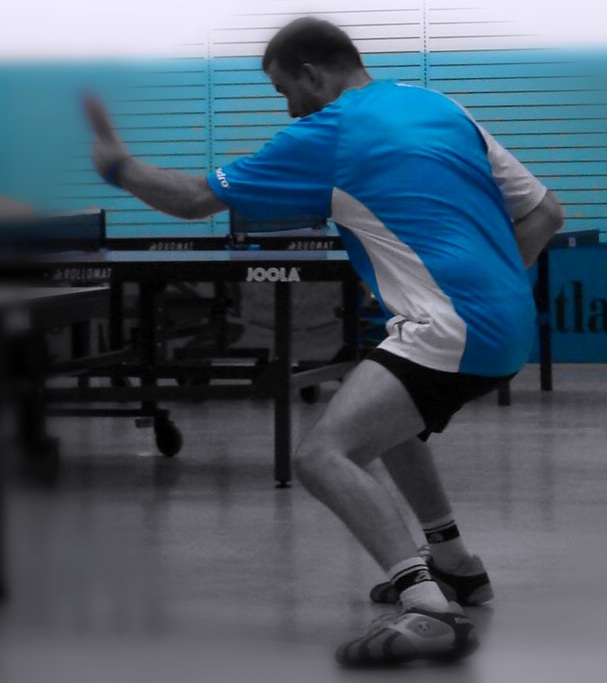
Joined: 06/22/2006 Location: North East US Status: Offline Points: 5618 |
 Post Options Post Options
 Thanks(0) Thanks(0)
 Quote Quote  Reply Reply
 Posted: 08/29/2009 at 9:56pm Posted: 08/29/2009 at 9:56pm |
|
|
I like tacky rubbers. I can't loop with non tacky rubbers !
|
||
 |
||
cole_ely 
Premier Member 
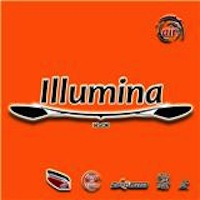
Joined: 03/16/2005 Location: United States Status: Offline Points: 6899 |
 Post Options Post Options
 Thanks(0) Thanks(0)
 Quote Quote  Reply Reply
 Posted: 08/29/2009 at 10:09pm Posted: 08/29/2009 at 10:09pm |
|
I do think you get some sense of control with the tacky rubbers that you dont' with non. They definitely slow the ball down. What he is saying I find to be true when I'm playing familiar opponents. When I know the spin I can really close down over it with tacky rubbers and play a safe game with heavy slow topspin (not really the proper style for this type of rubber anyway.) But if I take them to a club to play unfamiliar players, it definitely forces me to make more errors of spin. Moreso when I play against junk or junky players, because I'm so sensitive to spin anyway and just plain think too much about it when I'm playing those guys I think.
But when I play vs more powerful players who spin the ball on their serves and on their loops, my mistakes cause by the sticky rubbers is pretty much evened out by the mistakes I create by having so much extra spin esp on my serves and pushes.
Also, I find if I'm not playing my best the lightly tacky gives me more room to sort of keep the ball in play and develop a sense of rythym. For me, esp vs junk rubber, a lot depends on whether I can get in a few good rallies where I get a feel for the stuff. My ability to do that really suffers when I use fully tacky rubber. But then I'm not that good. So I think you would want to be like at least 1800 to even consider using sticky rubbers. At least that's what I try to tell people.
I suppose an exception might be like an older player who really understands and uses spin well, but his rating is lower because he doesn't move so good. Most of those guys are the ones using junk on the other side though. |
||
|
Wavestone St with Illumina 1.9r, defender1.7b
Please let me know if I can be of assistance. |
||
 |
||
sidofmillenium 
Gold Member 

Joined: 12/22/2003 Location: United States Status: Offline Points: 1504 |
 Post Options Post Options
 Thanks(0) Thanks(0)
 Quote Quote  Reply Reply
 Posted: 08/29/2009 at 11:03pm Posted: 08/29/2009 at 11:03pm |
|
|
Spin of the loop is decided by friction...if Ma Lin swings really hard with anti..he wont produce any spin. As a ball comes in, sinks in the sponge, friction is what stops it from rotating...stop..then bounce back...but with tackiness...as the rubber is about to catapult, tackness slows its speed and spin down.
|
||
 |
||
benfb 
Platinum Member 
Joined: 10/10/2008 Location: United States Status: Offline Points: 2709 |
 Post Options Post Options
 Thanks(0) Thanks(0)
 Quote Quote  Reply Reply
 Posted: 08/29/2009 at 11:11pm Posted: 08/29/2009 at 11:11pm |
|
As long as you want to be technical, that's not quite correct. You should recall from freshman physics that you have both kinetic friction and static friction. What you're saying is true for kinetic friction, however, all rubbers have a certain amount of static friction (they stick to the ball). The static friction applies when the ball leaves the rubber and can be used to remove some of the rotational energy of the ball.
So it is always possible to slow down the spin without the ball actually slipping on the rubber. This would be very difficult to do with normal grippy rubber because the coefficient of static friction is pretty low. However, sticky rubber has a relatively high coefficient of static friction. As an extreme case, imagine you coated your rubber with some sort of glue where the ball sticks to the rubber and actual stops moving. Then, when your paddle releases the ball, it has no rotational velocity at all.
Bottom line is that you can decrease with rotational velocity of any ball with the right skill, and with tacky rubbers, you have a hard time not doing it.
|
||
 |
||
figgie 
Gold Member 
Joined: 01/28/2005 Location: United States Status: Offline Points: 1026 |
 Post Options Post Options
 Thanks(0) Thanks(0)
 Quote Quote  Reply Reply
 Posted: 08/29/2009 at 11:17pm Posted: 08/29/2009 at 11:17pm |
|
|
for every action, there is a reaction of equal and opposite value.
Newton's third law of Motion
sid
you really need to brush up on your physics.
The ball rotating and colliding with a rubber surface that has 100% energy transfer back (doesn't not exist as there are thermodynamic losses that also need to be heeded). The ball WILL spin in the opposite direction at the SAME rotational velocity it contacted the rubber without INDUCING any energy of it's own. It is simply obeying Newtons Thirds Law of Motion just like anything else on this planet.
The basic premise of all collisions! car v car, Ping pong ball v paddle. All the sponge does is ADD to the overall efficency but never going over the 100% as just the mere production of sound means that some of that energy is used to produce that sound (change from inertial to heat and sound) along with some being lost into the sponge from compression and rebound (not 100% elestic).
FYI
Tackiness IS friction!
|
||
|
Speed glue, booster, tuner free since 2006!!!
|
||
 |
||
benfb 
Platinum Member 
Joined: 10/10/2008 Location: United States Status: Offline Points: 2709 |
 Post Options Post Options
 Thanks(0) Thanks(0)
 Quote Quote  Reply Reply
 Posted: 08/29/2009 at 11:32pm Posted: 08/29/2009 at 11:32pm |
|
When a ball collides with a paddle, you are trying to combine the initial energy of the ball with your own energy, but with the balls linear momentum reversed (the angular momentum is also reversed in counter-looping or counter-hitting). The challenge in learning to loop is being able to control how much of the new energy goes into reversing the angular moment (direction of spin) versus how much energy gets placed into the new linear momentum (the balls velocity in the oppositve direction).
When you loop a ball you cannot exceed the total energy present in the system (the ball's initial energy plus your body's energy). However, your body has a heck of a lot of energy, so it's kind of meaningless to talk about whether the balls energy is greater than it was.
The original post on this topic asked whether tack rubbers product more spin. For looping purposes, the general answer is no, they produce less. However, there may be ways to over come that.
|
||
 |
||
sidofmillenium 
Gold Member 

Joined: 12/22/2003 Location: United States Status: Offline Points: 1504 |
 Post Options Post Options
 Thanks(0) Thanks(0)
 Quote Quote  Reply Reply
 Posted: 08/29/2009 at 11:45pm Posted: 08/29/2009 at 11:45pm |
|
|
figgie, what did I say that disobeyed that law?
|
||
 |
||
JRSDallas 
Silver Member 
Joined: 09/03/2005 Location: USA Status: Offline Points: 585 |
 Post Options Post Options
 Thanks(0) Thanks(0)
 Quote Quote  Reply Reply
 Posted: 08/30/2009 at 12:42am Posted: 08/30/2009 at 12:42am |
|
|
The spin of a rubber is strongly determined by the frictional characteristics of the surface and the tangential coefficient of restitution of the rubber sheet.
The impact of how spin is felt on your opponent's racket is somewhat dependent on the spin to speed ratio as high spin at low speed causes maximum deviation of ball rebound from your opponent's racket (provided the ball does not slip on your opponents racket).
Tacky rubbers have higher coefficients of surface friction which allows for higher maximum forces of tangential stretching of the rubber sheet under lower levels of sponge compression (i.e. brush looping) stroke conditions. When you cause a maximum tangential deviation within the rubber sheet (or within the rubber and sponge when driving harder into the total system), you create the maximum tangential recovery force (spin production) on the ball with the minimum slipping between the ball and rubber during the recovery. Since you can generate these larger tangential component stretching and recovery forces without simultanously having to generate higher sponge compression and rebound forces (so as to maintain an equal amount of friction at the ball to rubber interface when the rubber is not sticky) then you end up with a spinnier ball with lower sponge rebound velocity component and thus a ball that has a greater spin to speed ratio.
This doesn't mean that you can't take a tacky rubber and by driving it into the sponge create even more friction at the interface and thus the opportunity for more tangential stretching and recovery, but you will also get an increasing amount of sponge rebound velocity which will act to reduce the overall spin to speed ratio.
The rub comes at the release point where the tangential recovery has fully occured but if the ball has not yet left the rubber surface, then the tackiness of the rubber and the reverse stretching (due to the balls spin) will start to slow the spin down until the ball exits the surface.
If you balance everything perfectly so that the ball exists at the instant of full recovery, the tacky rubber will also be acting to further reduce the speed of the rebound of the ball from the surface which will further tend to increase the spin to speed ratio (as speed is getting reduced).
The throw of the tacky rubber caused by the recovery of the rubber from the tangential stretching does also impart a translational speed component to the ball in addition to the rotation. This will also be part of the balancing.
I would hazard to guess that the maximum spin to speed ratio will be achieved with a fast racket speed brush loop against a dropping ball (i.e. a truly violently spinny serve).
|
||
|
Galaxy T1 89 gm
FH: HRT Huaruite Wujilong 2 - Dragon 2 II, Max, Black Donic Acuda S2, Max, Red |
||
 |
||
beeray1 
Premier Member 

Joined: 07/03/2008 Location: Iowa Status: Offline Points: 5169 |
 Post Options Post Options
 Thanks(0) Thanks(0)
 Quote Quote  Reply Reply
 Posted: 08/30/2009 at 12:57am Posted: 08/30/2009 at 12:57am |
|
|
tacky rubbers are inefficient for looping purposes? yeah, if you're a pussy.
what are you trying to prove with all these "myth" posts? are you rewriting the table tennis books or something? Bottom line, if you swing like a weenie whistle, european/japanese rubber that's grippy and has softer sponge will act more spinny when looping. If you have a lot of power and the proper stroke, the tacky rubbers with harder sponges will have much more spin. Especially when you brush loop. Theres no doubt that if you completely cut the ball, that tacky rubbers will be spinnier in the service game, and I think everyone who has used both can tell you which has more control and potency in the short game.
I have no problem looping or counterlooping pretty effectively with tacky rubber. In fact, counterlooping is my bread and butter. And I'm sure none of the other people playing chinese tacky rubber have problems doing it either. Its because they know how to use it. So what difference does it make?
Tacky rubber=no spin when looping? Tacky rubber inefficient for looping purposes? There are a huge group of people who disprove your point by incorporating more spin and better more potent looping and counterlooping (relooping) with tacky rubber than any of the other guys do- and they are called the Chinese National Men's team, ever heard of them? you should watch them sometime, and see what really is possible when you play your game instead of fish for senseless debates.
I think debraj said it best.
thanks
|
||
 |
||
Post Reply 
|
Page 12> |
|
Tweet
|
| Forum Jump | Forum Permissions  You cannot post new topics in this forum You cannot reply to topics in this forum You cannot delete your posts in this forum You cannot edit your posts in this forum You cannot create polls in this forum You cannot vote in polls in this forum |
|
Forum Home | Go to the Forums | Forum Help | Disclaimer
MyTableTennis.NET is the trading name of Alex Table Tennis Ltd. |